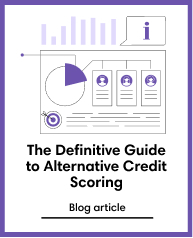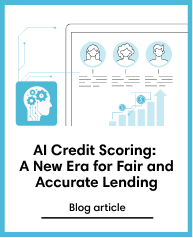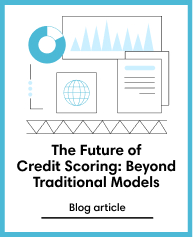Credit Scoring
Oct 29, 2021
How credit studies determine the chances of getting a loan
Subscribe to our newsletter
Before granting a loan, financial institutions analyze each particular case in order to understand the solvency of the potential borrower and, in this way, avoid any possible economic losses. The commonly used indicator to know a person’s solvency is the credit score. A good score reflects that the person is able to pay their debts; the higher the score, the more likely they are to obtain a loan and the lower their credit risk.
The parameters used in the classical credit study vary according to each institution. However, credit bureaus always consider data related to the banking system such as the credit history and the credit extension, among others.
What is a credit history?
Traditionally, a credit study is performed looking into an individual’s credit history, a record that documents their financial reports throughout the years. These records gather all the debts and payments made during an individual’s life and points out any outstanding balances.
A person is more likely to obtain a loan if the results show a credit history with a good ability to repay debts and a demonstrated responsibility in repaying them. Thus, the higher the score, the better a borrower looks to potential lenders. This report is required by financial institutions in order to assess a person’s credit risk.
How can I receive financing if my credit history is not positive?
The problem of analyzing an individual's solvency using just the financial history is that it generates a large gap between those who can obtain a good score and those who cannot. Many reliable people such as students, ethnic minorities, and informal workers have a low likelihood of accessing a loan due to their little or no banking history. However, thanks to technology advances, there are new and inclusive ways of scoring.
Alternative credit scoring for example allows previously excluded but solvent people to obtain a credit score according to their financial reality, whether or not they have a financial history. Alternative data comes from various digital sources and is updated in real time. This data includes application payments, social network behaviours, online purchases, telephone bill payments, among others. This information is interpreted by artificial intelligence algorithms that analyze people's behavior, building a more accurate credit profile.
Alternative information is accessed in the form of metadata, in other words, structured information packages that describe other data, safeguarding the identity of each client. This data is obtained with people’s consent, always protecting their privacy.
In emerging countries, where there are large masses of people outside the banking system, the development of these new alternative scoring methods is essential. Through alternative scoring people have higher chances of accessing a loan and of thus improving their everyday lives. In turn, companies can also pioneer in attracting new markets and new segments of a previously ignored population.
New credit analysis models have improved the traditional ones in their depth, precision and scope. Through the endless amount of data, we can now know people in different aspects of their daily life and, in turn, make more accurate prediction models through the continuous feedback of information. Alternative scoring crosses borders, enlarging the scope of prospects and reaching a larger mass of population without any incremental risk.





